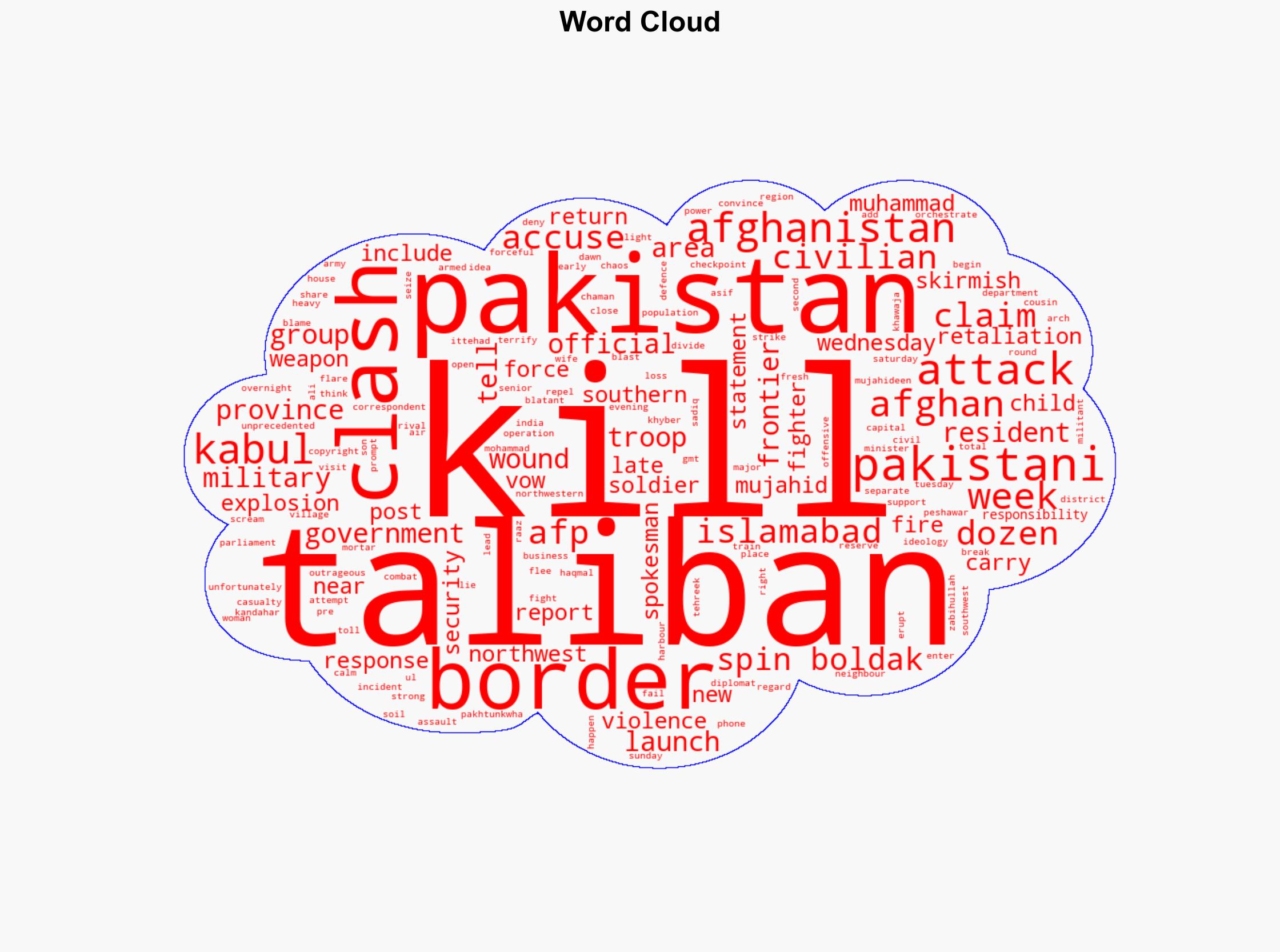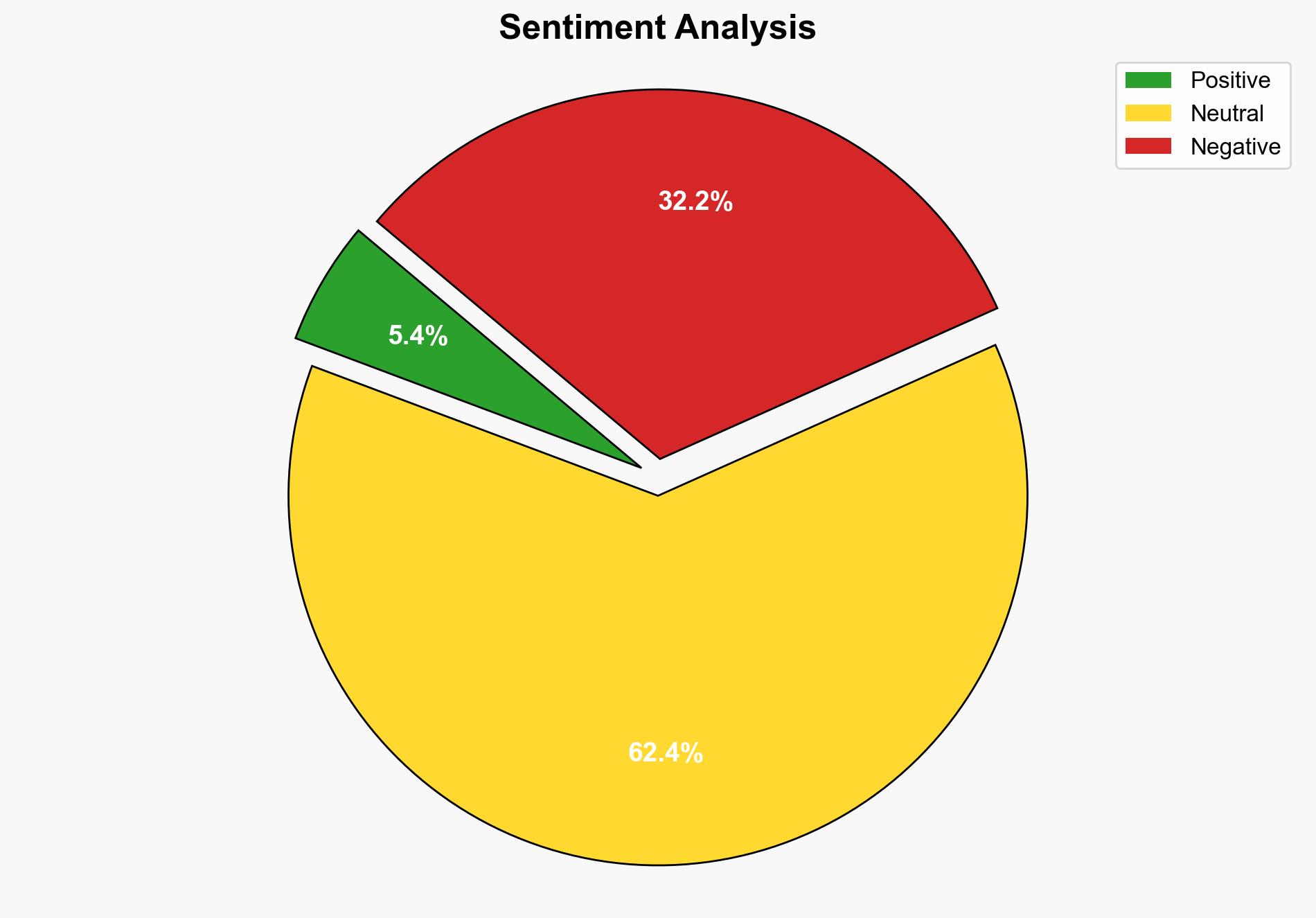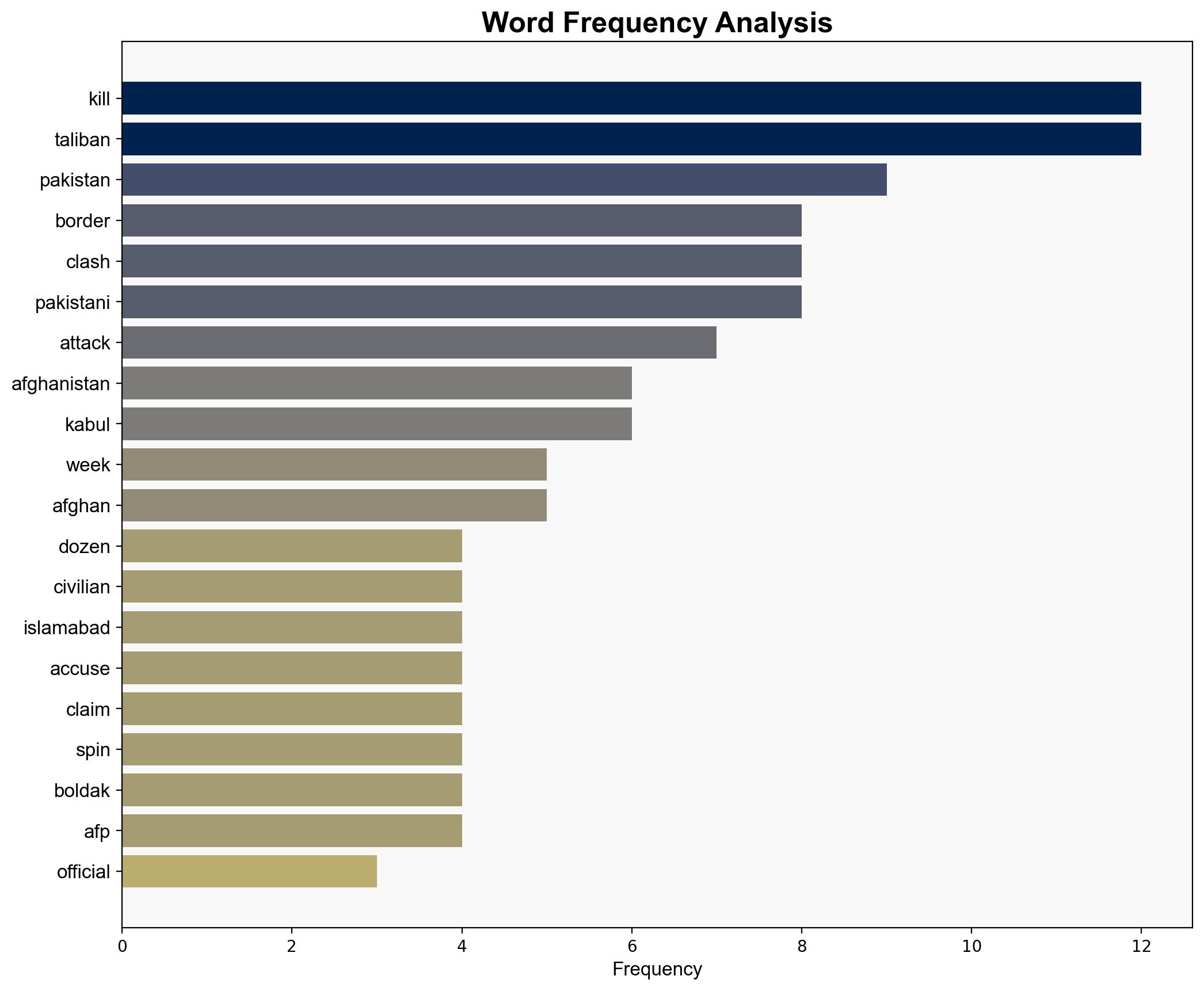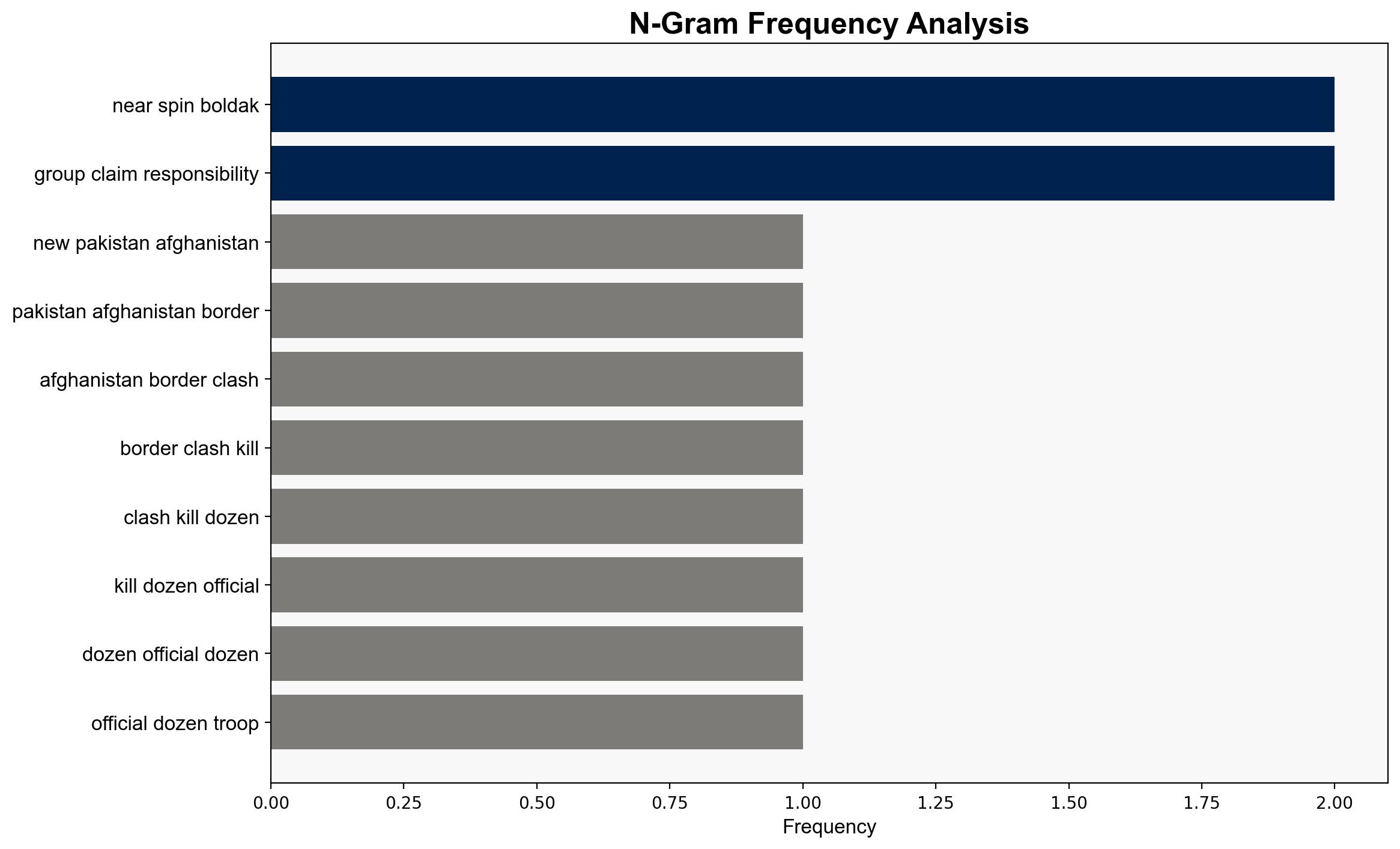New Pakistan-Afghanistan Border Clashes Kill Dozens Officials Say – International Business Times
Published on: 2025-10-15
Intelligence Report: New Pakistan-Afghanistan Border Clashes Kill Dozens Officials Say – International Business Times
1. BLUF (Bottom Line Up Front)
The most supported hypothesis is that the recent border clashes are primarily driven by retaliatory actions and longstanding grievances between Pakistan and Afghanistan, exacerbated by the presence of militant groups. Confidence level: Moderate. Recommended action: Initiate diplomatic engagement to de-escalate tensions and enhance intelligence cooperation to address militant threats.
2. Competing Hypotheses
1. **Hypothesis A**: The clashes are a direct result of retaliatory actions by both nations due to recent military operations and accusations of harboring militants. This hypothesis is supported by the sequence of events where each side accuses the other of initiating attacks and harboring hostile elements.
2. **Hypothesis B**: The clashes are orchestrated by third-party militant groups aiming to destabilize the region and exploit the tensions between Pakistan and Afghanistan. This is supported by the involvement of groups like the Ittehad ul Mujahideen and the Tehrik-i-Taliban Pakistan (TTP) in the region.
Using ACH 2.0, Hypothesis A is better supported due to the direct involvement and statements from both governments, indicating a pattern of retaliatory actions rather than third-party orchestration.
3. Key Assumptions and Red Flags
– **Assumptions**: Both hypotheses assume that the governments have control over their respective military actions and that militant groups are not acting independently.
– **Red Flags**: The denial by Kabul of harboring militants and the accusations from Islamabad could indicate potential deception or misinformation. The lack of independent verification of casualty figures and the sequence of events is a significant blind spot.
4. Implications and Strategic Risks
The ongoing clashes could lead to further destabilization of the region, potentially drawing in external actors and increasing the risk of a broader conflict. Economic impacts could arise from disrupted trade routes and increased military expenditures. The situation poses a risk of escalating into cyber conflicts or proxy wars, given the involvement of militant groups with transnational connections.
5. Recommendations and Outlook
- Engage in diplomatic dialogues facilitated by neutral parties to de-escalate tensions.
- Enhance intelligence-sharing mechanisms to better monitor and counteract militant activities.
- Scenario Projections:
- Best Case: Successful diplomatic intervention leads to a ceasefire and joint counter-terrorism efforts.
- Worst Case: Escalation into a full-scale conflict with regional spillover effects.
- Most Likely: Continued skirmishes with intermittent diplomatic engagements and unresolved tensions.
6. Key Individuals and Entities
– Zabihullah Mujahid
– Khawaja Muhammad Asif
– Ali Mohammad Haqmal
7. Thematic Tags
national security threats, counter-terrorism, regional focus, geopolitical tensions





